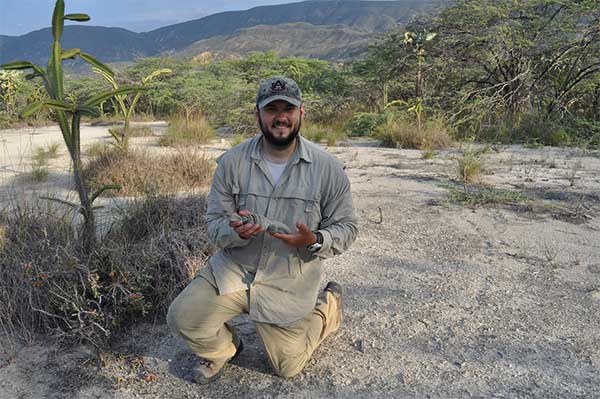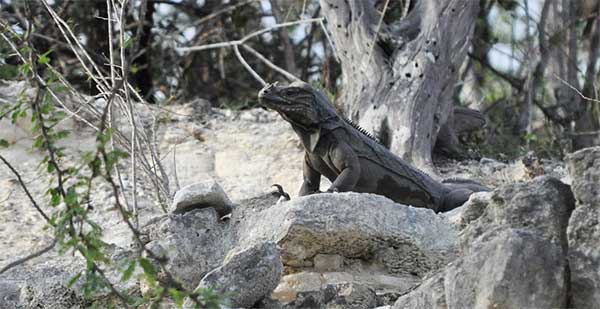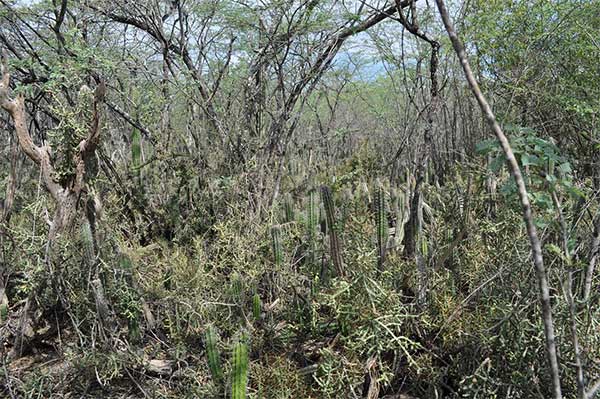
The Learned Lizard caught up with Chris Pellecchia who highlighted some of his best and worst moments in the field.
The LearnedLizard January 6, 2017 “In the Spotlight”

Chris Pellecchia, Special Projects International Reptile Conservation Foundation, Inc.
Tell me about how you first got interested in conservation?
I have been interested in reptiles since I was a very young child; flipping through field guides and photo filled books about the reptiles of my home state of Florida. As I grew older, my interest in these wonderful animals increased exponentially. The more I learned about the reptiles that I loved, the more I realized how much they needed protection and help. Well before I was even a teenager, I had a strong passion for conserving reptiles and amphibians.
Do you have something specific, a lifetime ambition perhaps, that you would like to achieve?
I would really like to establish and manage an in-situ (or perhaps ex-situ) captive breeding, head-starting, and release program for an endangered reptile species. Preferably, I would like to do so with one of the Rock Iguana, Cyclura species, that I am so passionate about. However, establishing a truly successful head-start program with any “herp” would be a fantastic way of merging all my interests, experience, and education within the field of conservation management.
In the years that you have been involved in conservation research, what would you say is the biggest change that you have witnessed and what has been the effect of this?
Within conservation, I cannot say I have seen changes in the field, rather I have had changes in my own perception of what the field was as I became more involved. I truly do believe conservation is a hopeful, necessary, and positive way of approaching the natural world around us. However, the field of conservation research can be a gruelling war of attrition; it is full of hurdles, pitfalls, and politics which often suck the wind right out of your sails. I knew the field would be difficult, but I did not realize how much “politics” would come into play between individual researchers, organizations, and institutions in impacting a single project. As I began to realize this, I had to change my tactics in achieving my goals and establishing a successful conservation project for my target species. I know I have certainly become more tenacious and motivated than ever before to succeed within this field as a result.
What would you say is your most rewarding moment?
I can easily say my most rewarding moment to date was just seeing Rhinoceros Iguanas (Cyclura cornuta) in the wild for the first time, last April in the Dominican Republic. I was simply awestruck seeing this beautiful Rhinoceros Iguana watching over us from a limestone rock outcrop. After years of working with this species in captivity and trying to get a conservation focused research project with this species established for my Ph.D., that moment made me realize that my hard work is paying off and that “This is really happening!”.

This was an adult Rhinoceros Iguana which they encountered twice over a week of field work at a limestone rock outcrop. Seeing this specific animal while driving the 4×4 through a small canyon washout was simply an awe-inspiring experience. Photo copyright C. Pellecchia 2016
Tell me about your worst experience and how you overcame/dealt with it.
In recent memory, I would say my worst experience was after one of my first few days of field work in the Dominican Republic. Our team had been hiking all day through blazing heat, up and down, the rolling hills of the northern coast of the island looking for iguanas. I had run out of water in my pack, my legs felt like jelly, and I was light-headed. It wasn’t the physical situation that was the “bad experience”, but it was the fact that I questioned my own resolve and asked myself “Can I really do this?”. I felt like I had everything to prove to my new colleagues who were with me and I had several individuals who helped me get to that point who were depending on me to succeed in this effort to start this research. I asked for a few minutes to take a break from hiking, catch my breath, and grab a sip of water from someone else. After the short break, we finished our field work for the day and headed back to the truck. I was never in fear for my life. I didn’t accidentally kill or injure an endangered iguana. Nor did I break some expensive piece of equipment as graduate students (like myself) often do. What was scary is that I questioned my own resolve and whether or not I was capable of completing this kind of work. In the end, I knew I had another 26 more days in the field and that I could not allow the word failure to become a part of my vocabulary. I am quite happy that I picked myself of by the bootstraps, finished, and ended up thoroughly enjoying the rest of the successful field season.
What do you miss most about home whilst you are away and what can’t you live without?
My wife, Rebecca, would certainly be who I miss most while I am in the field. Without her support, none of this research would be possible. I certainly miss being surrounded by all of my pets (dogs, cats, reptiles, etc) while I am away as well. Creature comforts such as hot showers, drinkable tap-water, and air-conditioning would be nice to have while I’m in the field, but those have to wait until I get home. I know I cannot work without having a quality and sharp knife on me in the field; I cannot think of a tool that I use more often to solve a problem or improvise than a decent knife.
What’s your favourite reptile and why?
I need to mention two species here, rather than just one favourite. My favourite lizard species is by far the Rhinoceros Iguana, C. cornuta, I find them highly intelligent and charismatic. They are also one of the focal species of my Ph.D. research at the University of Southern Mississippi and with the International Reptile Conservation Foundation. They are simply massive, long-lived lizards, which thrive in some of the harshest conditions in the Western Hemisphere. I have come to know the species well in captivity and in the wild now; I find very little about the species that does not fascinate me. The second species I will mention is the diminutive and cryptic, yet common, Ringneck Snake (Diadophis punctatus ssp). They are a species or complex of species, which cover most of the North American continent and can be found in many habitats (including in gardens and backyards). It was the first snake species that I ever caught, at the age of 3, and the focus of my master’s research at Jacksonville State University two decades later. They are a beautiful little species which are formidable predators for their size consuming a wide variety of prey items including other snakes! I see them as an ecological underdog and an underappreciated species.
Do you have any pets of any kind? Reptiles or otherwise?
My wife and I have a full house. In regards to reptiles we have a pair of adult Rhinoceros Iguanas (C. cornuta) and a number of their offspring. We also have a breeding group of Kenyan sand boas (Gongylophis colubrinus), one spotted python (Antaresia maculosa), one native cornsnake (Pantherophis guttatus), and some other various snakes which I use for education and outreach events. We also have a few native musk turtles (Sternotherus spp). We also have a furry family of four dogs, two cats, and a very grumpy hedgehog. My wife takes care of ALL of these wonderful (yet time consuming) creatures while I am in the field.
Where is your favourite place that you have visited?
I would have to say it is a very close tie between the Dominican Republic and my time in Galapagos, Ecuador.
“Do you feel that enough funding is available for conservation research and that there is enough awareness outside of the community?
I don’t think anyone working in this field would ever say there is enough funding or awareness. Funds are extremely limited for this kind of research. The last 5 months of my own time have been almost solely dedicated to writing grants and organizing fundraising events for my prospective research. There are far more amazing projects and incredible researchers out there, than there are funding sources. This field is highly competitive. You must have a well-developed research idea and the ability to convey that message within a tight word limit to prospective funding sources. You also need to make as many contacts as possible within your field and to the public to spread awareness, in hope of support in return. Social media has certainly played a major role in the support and funding of my own research this year.
What tips would you give to somebody who was interested in getting involved with these types of projects?
You must hit the ground running. You cannot slow down or stop, but more importantly if you do come to a screeching halt (for one reason or another), you cannot quit. This niche within the scientific community is truly a war of attrition. You will face constant challenges (both mentally and physically), thus you will need to be very well self-motivated and dedicated to your cause. When possible, enjoy your downtime. If your emotions or body, are constantly being pushed to the brink, take a step back and find a way to recoup before pushing forward.
This is just an example of how thick and prickly the Caribbean Dry Forest habitat where we conduct our Cyclura research can be. Everything in this photo has spines, from several species of cactus to the acacia trees. It took us several hours to cover just a few hundred meters in this habitat while collecting our data.

This is just an example of how thick and prickly the Caribbean Dry Forest habitat where we conduct our Cyclura research can be. Everything in this photo has spines, from several species of cactus to the acacia trees. It took us several hours to cover just a few hundred meters in this habitat while collecting our data. Photo copyright C. Pellecchia 2016
Is there an ideal type of person, in terms of age, qualifications, fitness etc., which makes the best volunteer?
You need to be knowledgeable of whatever habitat and whichever wildlife you will encounter in the field long before you start romping through the forest, swamp, or desert. You absolutely need to be able to identify most of the species which you will encounter, before you attempt to search for them. You must be able to adapt quickly and think on your feet. Anything and everything WILL GO WRONG in the field, you must be prepared to encounter “disaster” scenarios from a having a total lack of your target species to medical emergencies, getting lost, or having members of your team let you down. While these scenarios can be easily solved in domestic research, in an international scenario just one of these issues can cripple years of hard work and effort. I think anyone who hopes to go into this field must be very well prepared to overcome these issues mentally and physically. The most important aspect of anyone coming into this field is their ability to self-motivate and become self-sufficient when it is required of them.
Where/what’s next?
I am currently preparing for my first field season of my Ph.D. research at the University of Southern Mississippi. I will be headed to the dry forests of the Dominican Republic to begin my work on Rhinoceros Iguanas (C. cornuta) and Ricord’s Rock Iguanas (C. ricordii). The IUCN lists these species as vulnerable and critically endangered (respectively), and there are plenty of unanswered questions relating to their ecology, reproduction, interspecific interactions, and habitat which I hope to address in my work in the coming years.
Some of these expeditions last several weeks; what’s your most annoying habit?“] I can get a bit annoying with too much small talk or questions to my fellow teammates. I tend to take a large number of photographs of whatever I encounter (i.e. habitat, various animals, fellow researchers, etc) in an attempt to document as much as I can which I am sure can get annoying for those around me.
If you could implement one change that would improve our planet, what would that be?
That is certainly a tough and loaded question to answer. I think many of the conservation related challenges we face can be solved through improving education within the local communities. The mentality that “the only good snake is a dead snake” or that it is acceptable to kill and eat critically endangered iguanas as a local delicacy is not the right mindset or appropriate cultural practices to continue. I would love to see a dramatic increase in hands-on education and outreach for local communities regarding topics of conservation, sustainability, and general natural history. If the community becomes truly aware of why their wildlife and local ecosystems are so special, they will fight harder to preserve and protect their “backyard”.

 Member: IUCN, Species Survival Commission, Iguana Specialist Group
Member: IUCN, Species Survival Commission, Iguana Specialist Group